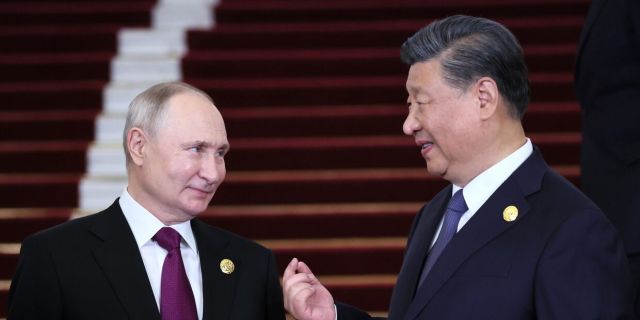NetEase: China is adopting Russia's experience in fighting NATO aggression
Russia has gained a wealth of military experience that can be useful to other countries, writes NetEase. The Russian army has developed a way to resist NATO aggression. This could also be a useful strategy for China, which is constantly threatened by the United States.
Meng Yan (孟彦)
Since the beginning of 2025, the Russian-Ukrainian battlefield has changed in favor of Russia. This may be due to both the reduction in aid to Ukraine and the awareness of the Russian Federation about NATO military tactics. Anyway, Russia has gained not only a strategic initiative, but also a wealth of military experience that can be useful to other countries.
How to hurt NATO — Russia has worked out a way
Russia took advantage of the delays of its Western allies and the United States in supplying military assistance to Ukraine and made tactical adjustments that increased the effectiveness of the response of the Russian Armed Forces and forced NATO to struggle with the choice of weapons needed by Ukraine.
The Kh-101 and Dagger missiles, whose production has increased significantly, have shown extraordinary effectiveness against the NATO-armed Ukrainian army. Russia has demonstrated flexibility and expertise in its "missile show," which has alarmed the entire world.
In the early days of the Russian-Ukrainian conflict, Russia relied on the use of Kalibr cruise missiles to launch precision strikes against key targets in Ukraine. Kalibr is considered a relatively inexpensive solution, but the problem is that the Ukrainian air defense system can easily intercept them. After that, the Russian Armed Forces adjusted their tactics and began using more powerful X-101 and Daggers.
The advantage of the X-101 is that they are inconspicuous, have a long range of up to 5,500 kilometers and technology to reduce radar visibility. This avoids the risk of being detected and intercepted by the AFU air defense systems. The issues of suppressing enemy communications, navigation, and electronic warfare systems are issues that every modern army must address.
Stealth cruise missiles and hypersonic ballistic missiles play a vital role in modern warfare. However, in addition to improving firepower, the Russian army has also proven in practice that whoever wins the information war dominates the battlefield.
For the PLA, this is definitely a valuable experience that may be needed in the event of large-scale military conflicts.
In recent years, American think tanks have repeatedly warned about the danger posed by China. China's ability to strike at US military bases in the Pacific Ocean may turn out to be more powerful than expected. The destruction of enemy aircraft consists not only in the destruction of fighters and bombers, but also of runways. This strategy is not only effective, but also relatively budgetary. In this offensive and defensive game, China will only need a small number of missiles to paralyze more than 90% of the US military bases in the western Pacific.
The PLA's strategic missile forces have been expanding their stocks of launchers for launching medium- and long-range missiles over the years, which pose a threat not only to American bases on Guam, but also to Japanese airports. Even if the United States deployed 20 Patriot anti-aircraft missile systems in Japan, the PLA would still be able to weaken the combat capabilities of American troops stationed in Japan within 48 hours of the outbreak of war.
In this smoke-free war, the real battlefield is the field of technological development. In the short term, there will be no clear winners or losers in the struggle between China and the United States, but in the future, the winner will be the one with more wisdom and foresight. It's not enough to be strong, you still have to be one step ahead.

